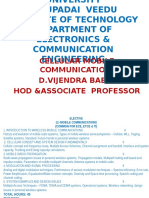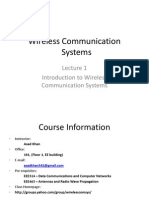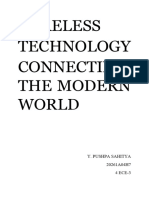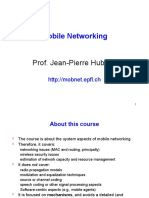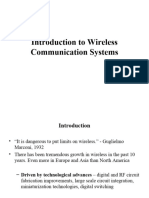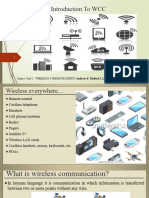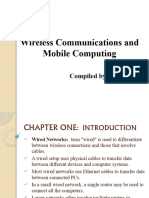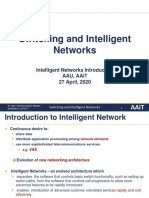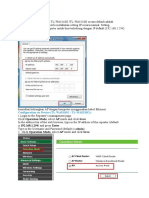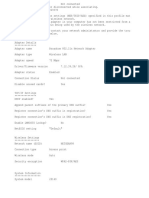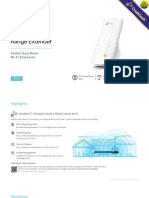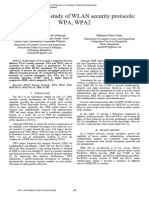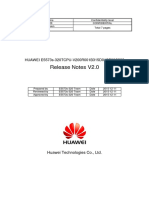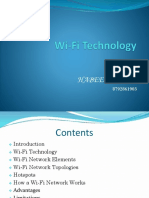0% found this document useful (0 votes)
132 views21 pagesWireless & Mobile Comm Overview
The document provides an overview of wireless and mobile communication. It discusses challenges of wireless communication including the unpredictable wireless channel, restrictive spectrum regulations, and lower transmission rates compared to wired systems. It also covers spectrum allocation for different wireless services, applications of wireless communication in areas like intelligent transport, environmental monitoring, smart homes, and military operations. The document outlines various wireless network classifications based on coverage, node mobility, and architecture.
Uploaded by
Aman KemalCopyright
© © All Rights Reserved
We take content rights seriously. If you suspect this is your content, claim it here.
Available Formats
Download as PDF, TXT or read online on Scribd
0% found this document useful (0 votes)
132 views21 pagesWireless & Mobile Comm Overview
The document provides an overview of wireless and mobile communication. It discusses challenges of wireless communication including the unpredictable wireless channel, restrictive spectrum regulations, and lower transmission rates compared to wired systems. It also covers spectrum allocation for different wireless services, applications of wireless communication in areas like intelligent transport, environmental monitoring, smart homes, and military operations. The document outlines various wireless network classifications based on coverage, node mobility, and architecture.
Uploaded by
Aman KemalCopyright
© © All Rights Reserved
We take content rights seriously. If you suspect this is your content, claim it here.
Available Formats
Download as PDF, TXT or read online on Scribd
/ 21




